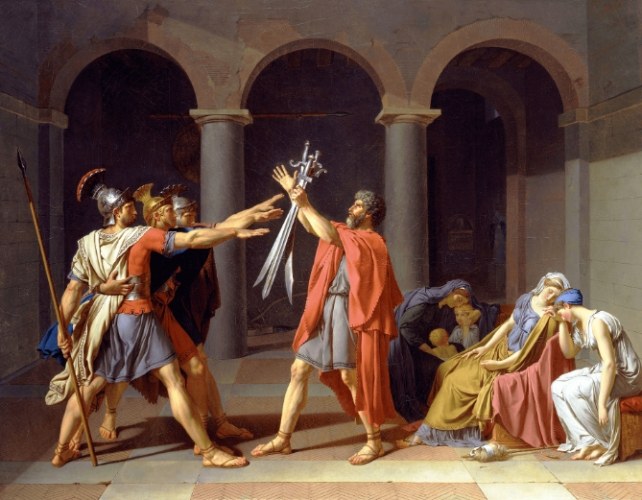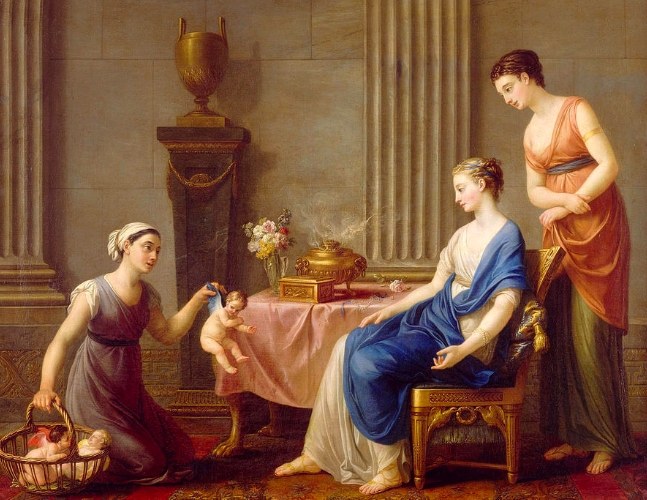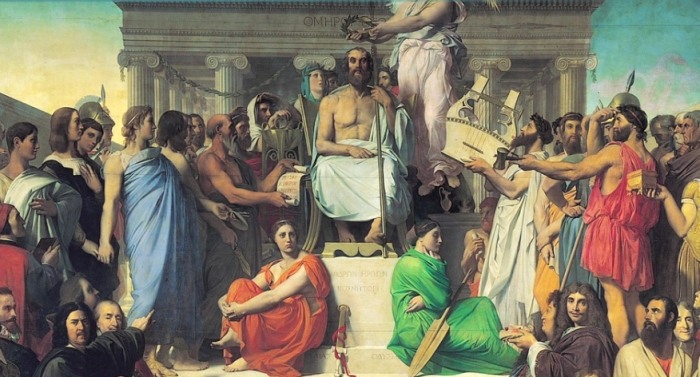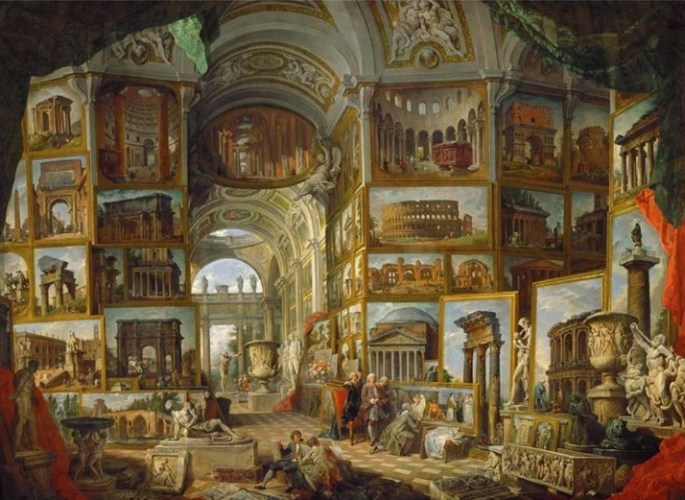Neo Classical Art Movement: Revival of Ancient Ideals in 18th Century Europe
Advertisements
Ever wondered how the Neo Classical Art Movement revived antiquity's grandeur? Explore 18th-century Europe's artistic rebellion against Rococo excess—from Jacques-Louis David's heroic canvases to Canova's marble perfection. Discover key characteristics like clean lines, mythological themes, and moral rigor that defined this movement. Learn how classical Greek/Roman ideals shaped architecture, sculpture, and revolutionary propaganda while influencing modern minimalism!
Table of Contents
As a French resident, I have always been fascinated by the rich tapestry of artistic movements that have shaped our nation's cultural identity. Among these, the Neoclassical art movement stands out as a pivotal period that redefined artistic expression in the 18th and 19th centuries. This movement was not merely a stylistic shift but a profound intellectual and cultural response to the tumultuous events of the time, including the Enlightenment, the American and French Revolutions, and the subsequent rise of Napoleon Bonaparte. In this article, I will delve into the historical context, major events, key figures, and defining characteristics of the Neoclassical art movement, offering a comprehensive overview from a uniquely French perspective.
Historical Context

The Enlightenment Influence
The Neoclassical movement emerged in the wake of the Enlightenment, a period characterized by a renewed interest in reason, science, and the classical ideals of ancient Greece and Rome. Enlightenment thinkers such as Voltaire, Rousseau, and Diderot advocated for a return to the simplicity, order, and rationality found in classical art and literature. This intellectual shift laid the groundwork for the Neoclassical movement, which sought to emulate the moral and aesthetic values of antiquity.
The American and French Revolutions
The political upheavals of the late 18th century, particularly the American Revolution (1775-1783) and the French Revolution (1789-1799), further fueled the Neoclassical movement. These revolutions were driven by ideals of liberty, equality, and fraternity, which resonated deeply with the classical values of democracy and civic virtue. Artists of the time saw in ancient Greece and Rome models of republican governance and heroic virtue, which they sought to emulate in their works.
The Rise of Napoleon Bonaparte
The ascension of Napoleon Bonaparte to power in 1799 marked a significant turning point for the Neoclassical movement. Napoleon, a self-proclaimed admirer of classical antiquity, used art as a tool for propaganda, commissioning grandiose Neoclassical works to glorify his reign and promote his vision of a unified France. This patronage led to a flourishing of Neoclassical art, particularly in the fields of painting, sculpture, and architecture.
Major Events and Milestones

The Salon de Paris
The Salon de Paris, an annual art exhibition held in the Louvre, played a crucial role in the dissemination and recognition of Neoclassical art. Established in 1667, the Salon became the premier platform for artists to showcase their works to the public and critics alike. During the Neoclassical period, the Salon featured numerous Neoclassical masterpieces, cementing the movement's status as the dominant artistic style of the time.
Notable Salon Exhibitions
- 1785 Salon: Jacques-Louis David's "Oath of the Horatii" was exhibited, marking a turning point in the acceptance of Neoclassical painting.
- 1800 Salon: David's "The Intervention of the Sabine Women" was showcased, further solidifying his reputation as the leading Neoclassical painter.
- 1812 Salon: Antoine-Jean Gros's "Napoleon Bonaparte Visiting the Plague-Stricken in Jaffa" was displayed, highlighting the movement's connection to Napoleon's imperial ambitions.
The Grand Tour
The Grand Tour, a traditional trip undertaken by young European aristocrats to visit cultural and historical sites in Italy, Greece, and other Mediterranean countries, also influenced the Neoclassical movement. Many artists and intellectuals embarked on the Grand Tour, bringing back with them a deep appreciation for classical art and architecture. This exposure to antiquity inspired a new generation of artists to incorporate classical motifs and themes into their works.
Key Figures and Their Contributions

Jacques-Louis David
Jacques-Louis David is widely regarded as the father of Neoclassical painting. His works, characterized by their clarity of form, moralistic themes, and classical references, epitomized the Neoclassical style. David's early career was marked by a shift from Rococo frivolity to a more serious and moralistic approach, influenced by his study of classical art and his involvement in the French Revolution.
Notable Works
- "Oath of the Horatii" (1784): This painting depicts a scene from Roman history, emphasizing themes of duty, sacrifice, and patriotism.
- "The Death of Marat" (1793): Commissioned by the revolutionary government, this work commemorates the assassination of Jean-Paul Marat, a leading figure in the French Revolution.
- "The Coronation of Napoleon" (1805-1807): David's monumental painting captures the grandeur of Napoleon's coronation, showcasing his skill in depicting historical events with classical precision.
Antonio Canova
Antonio Canova, an Italian sculptor, was another prominent figure in the Neoclassical movement. Known for his idealized representations of the human form, Canova's sculptures embodied the Neoclassical ideals of beauty, harmony, and proportion. His works often drew inspiration from classical mythology and history, creating a sense of timelessness and universality.
Notable Works
- "Psyche Revived by Cupid's Kiss" (1787-1793): This marble sculpture depicts the mythological scene of Psyche being awakened by Cupid's kiss, showcasing Canova's mastery of the human form and his ability to convey emotion through marble.
- "Pauline Bonaparte as Venus Victrix" (1805-1808): Commissioned by Napoleon's sister, this sculpture portrays Pauline Bonaparte as the goddess Venus, emphasizing her beauty and sensuality.
Étienne-Louis Boullée
Étienne-Louis Boullée, a French architect, is celebrated for his visionary Neoclassical designs. Although many of his projects were never built, his drawings and proposals had a profound impact on the architectural world. Boullée's work was characterized by its grand scale, geometric forms, and use of light and shadow to create dramatic effects.
Notable Designs
- "Cenotaph for Isaac Newton" (1784): This unrealized design features a massive spherical structure dedicated to the scientist Isaac Newton, symbolizing the universal nature of his discoveries.
- "Church of Sainte-Geneviève" (1777-1793): Also known as the Panthéon, this building was originally designed as a church but later converted into a mausoleum for great Frenchmen. Its grand Corinthian columns and dome reflect Boullée's Neoclassical influences.
Characteristics and Aesthetic Principles

Emphasis on Classicism
Neoclassical art is characterized by its emphasis on classicism, drawing inspiration from the art and architecture of ancient Greece and Rome. Artists sought to emulate the simplicity, order, and harmony found in classical works, often incorporating classical motifs, themes, and styles into their own creations.
Moral and Didactic Themes
Many Neoclassical works carry moral and didactic messages, reflecting the movement's connection to the Enlightenment and the French Revolution. Artists used their works to promote ideals such as patriotism, duty, and civic virtue, often depicting historical or mythological scenes that conveyed these values.
Clarity of Form and Composition
Neoclassical art is known for its clarity of form and composition. Artists aimed to create works that were easily understandable and visually appealing, using clear lines, balanced compositions, and a restrained color palette. This emphasis on clarity and order was a reaction against the ornate and emotional excesses of the Rococo style.
Use of Marble and Other Noble Materials
In sculpture, Neoclassical artists frequently used marble and other noble materials to create their works. These materials were valued for their durability, beauty, and association with classical antiquity. The use of marble allowed artists to achieve a high level of detail and realism in their sculptures, enhancing their aesthetic appeal.
Timeline of the Neoclassical Art Movement
Early Neoclassicism (1750-1780)
- 1750s: The first signs of Neoclassical influence appear in the works of French artists such as Charles-Joseph Natoire and François Boucher, who begin to incorporate classical motifs into their paintings.
- 1760s: The Grand Tour becomes increasingly popular among European aristocrats, leading to a greater appreciation for classical art and architecture.
- 1770s: Jacques-Louis David begins his artistic career, studying under Joseph-Marie Vien and developing his Neoclassical style.
High Neoclassicism (1780-1815)
- 1780s: David's "Oath of the Horatii" is exhibited at the Salon de Paris, marking a turning point in the acceptance of Neoclassical painting.
- 1790s: The French Revolution leads to a surge in Neoclassical art, as artists use their works to promote revolutionary ideals.
- 1800s: Napoleon Bonaparte's rise to power brings a new wave of patronage for Neoclassical art, with David becoming his official court painter.
Late Neoclassicism (1815-1850)
- 1815: The fall of Napoleon marks the end of the High Neoclassical period, but the movement continues to influence art and architecture in Europe.
- 1820s-1830s: Neoclassical elements are incorporated into the emerging Romantic movement, creating a hybrid style known as Romantic Classicism.
- 1840s-1850s: The Neoclassical movement gradually declines in popularity, giving way to new artistic movements such as Realism and Impressionism.
Q&A
1. What is the Neoclassical movement?
The Neoclassical movement was an artistic and cultural movement that emerged in the 18th and 19th centuries, characterized by a return to the classical ideals of ancient Greece and Rome. It was influenced by the Enlightenment, the American and French Revolutions, and the patronage of Napoleon Bonaparte. Neoclassical art emphasized clarity of form, moral and didactic themes, and the use of classical motifs and styles.
2. What are the characteristics of Neoclassical art movement?
The characteristics of the Neoclassical art movement include:
- Emphasis on Classicism: Drawing inspiration from ancient Greece and Rome.
- Moral and Didactic Themes: Promoting ideals such as patriotism, duty, and civic virtue.
- Clarity of Form and Composition: Using clear lines, balanced compositions, and a restrained color palette.
- Use of Marble and Other Noble Materials: In sculpture, to achieve a high level of detail and realism.
3. What is the neo art movement?
The term "neo art movement" is somewhat ambiguous and can refer to various modern and contemporary art movements that draw inspiration from or react against earlier artistic styles. In the context of the Neoclassical movement, "neo" could be seen as a prefix indicating a new or revived interest in classical themes and styles. However, it is important to note that the Neoclassical movement itself is a distinct historical period with its own set of characteristics and influences.
4. What is the main idea of Neoclassical art?
The main idea of Neoclassical art is to emulate the classical ideals of ancient Greece and Rome, emphasizing simplicity, order, harmony, and moral virtue. Artists sought to create works that were not only aesthetically pleasing but also carried meaningful messages, often drawing inspiration from historical or mythological scenes to convey these values. The Neoclassical movement was a response to the perceived excesses of the Rococo style and a reflection of the intellectual and political changes of the time.
About the author:My name is Chloe, a lifelong Parisian with an insatiable passion for sharing the magic of la belle France. Through this blog, I’ll take you beyond the postcard clichés to uncover the soul of France—its riveting history, hidden-gem destinations, decadent cuisine, and the art de vivre that makes this country unforgettable. Whether you’re planning a trip, a foodie craving authentic recipes, or a culture enthusiast, join me as we explore everything from cobblestone villages to haute couture boutiques.
Advertisements